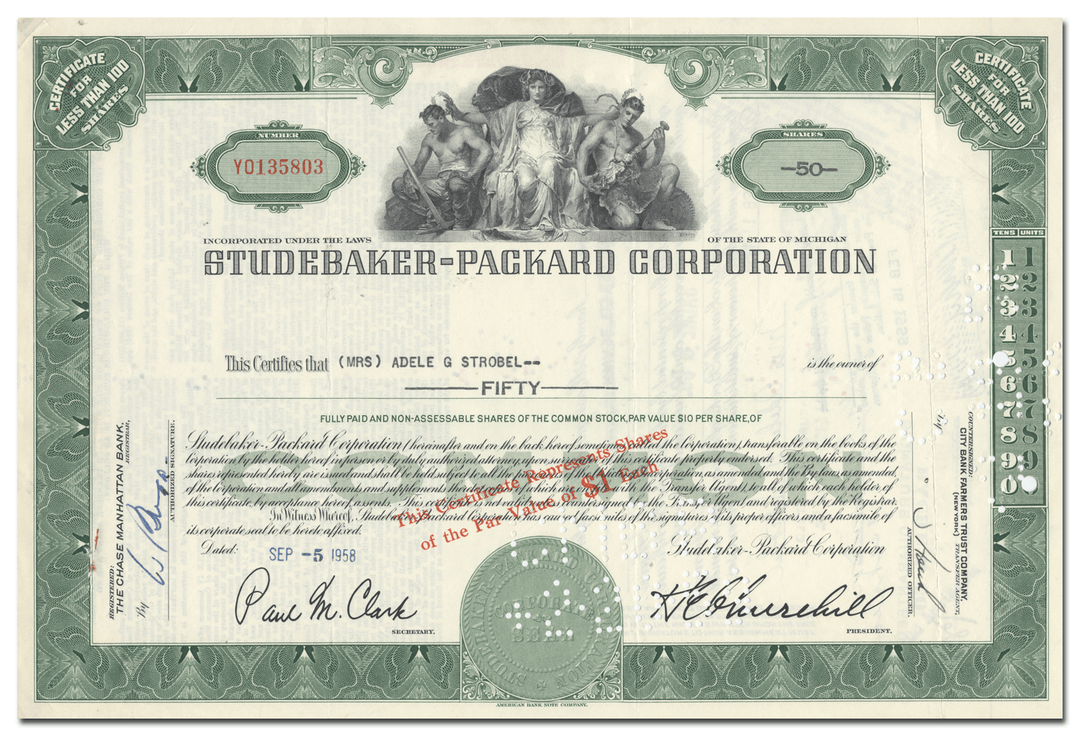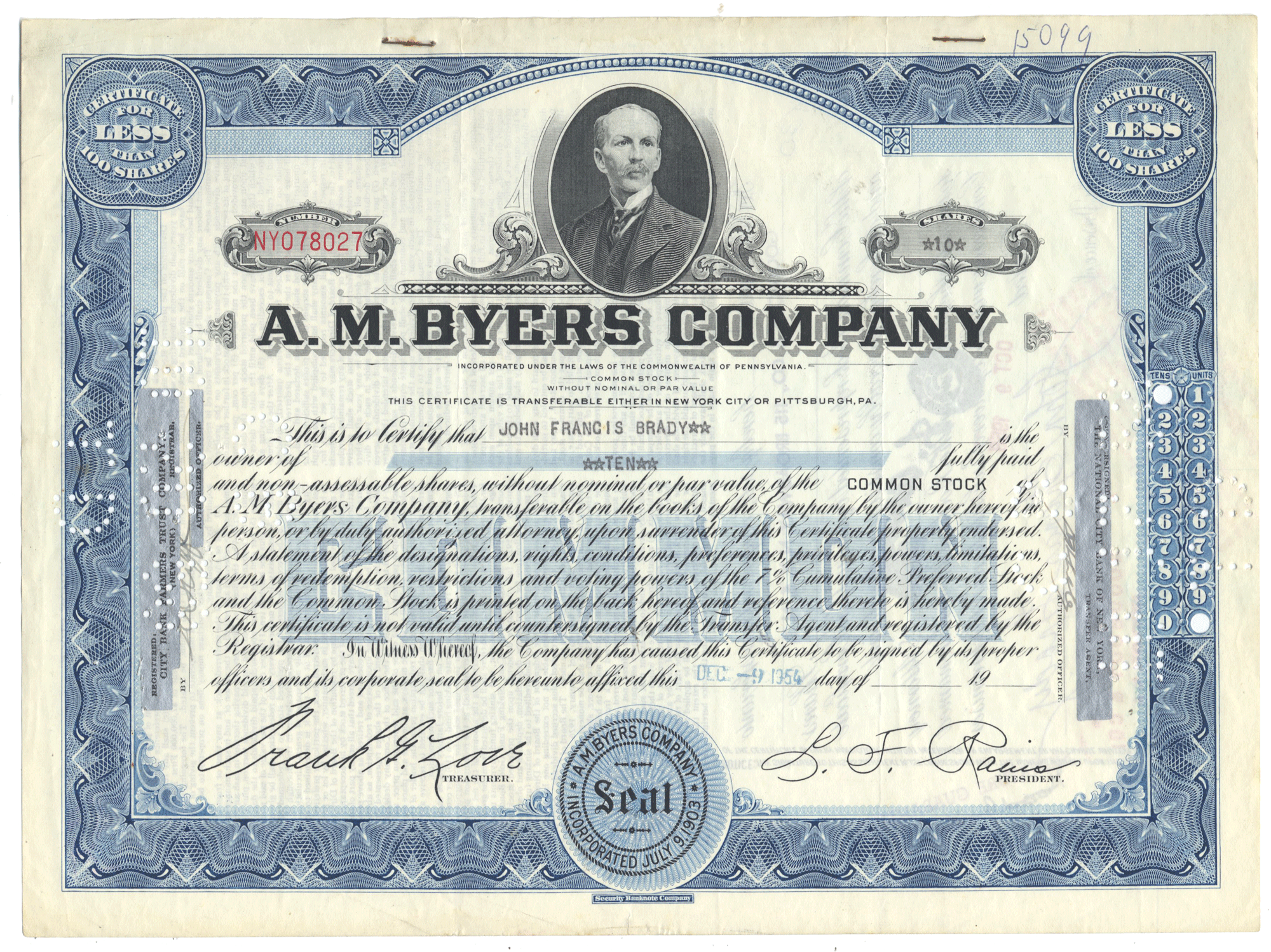
Studebaker-Packard Corporation
- Guaranteed authentic document
- Orders over $75 ship FREE to U. S. addresses
Regular price
$ 2.40
$ 2.40
Regular price
$ 6.00
$ 6.00
Sale price
$ 2.40
$ 2.40
Save 60%
/
Images are representative of the piece you will receive
Over 50 years old
Common stock
1950's
Issued, canceled
American Bank Note Company
Machine printed signatures
12" (w) by 8" (h)
NA
Additional Information
Certificates carry no value on any of today's financial indexes and no transfer of ownership is implied. All items offered are collectible in nature only. So, you can frame them, but you can't cash them in!
All of our pieces are original - we do not sell reproductions. If you ever find out that one of our pieces is not authentic, you may return it for a full refund of the purchase price and any associated shipping charges.





